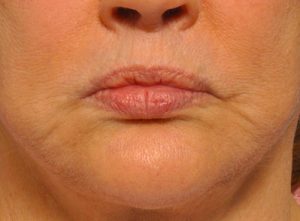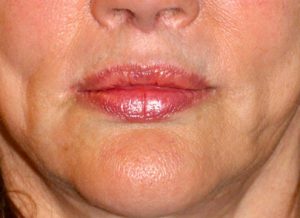Despite the small size of the corner of the mouth, it appearance can have a major effect on the appearance of one’s disposition. The mouth corner is generally overlooked as long as it has a neutral or level orientation. But once is starts to head south with facial aging (or just exists that way by natural development), its downturned appearance creates an unhappy or even angry appearance.
There are corner of mouth lifts which are done directly and have been around since the earliest days of facial rejuvenation surgery. The original corner of mouth lift description left a scar one that trailed upwards towards the ear which I have always found unacceptable. As a result I developed a unique pennant corner of the mouth lift that keeps the scar line within the confines of the vermilion-skin border. (no scar line extends outward away from the mouth corners) While I have found this to be the most effective approach for lifting the mouth corner I am always open to seeing what others do for this uniquely small but effective facial rejuvenative procedure.
In the December 2021 issue of the Aesthetic Plastic Surgery Journal a modification of the corner of the mouth lift was reviewed entitled ‘Oral Commissure Lift: A Retrospective Analysis of Complication rates and Overall Outcomes’. In this paper the authors describe their surgical technique which is really a clever application of the z-plasty concept combined with an elliptical skin excision use above the mouth corner. A strip of muscle is then elevated and transposed superiorly. The corner is then lifted and the very small z-plasty limbs switched to inset the corner lift. The procedure was performed in over 50 patients over a 7 year period. Many of the patients had a concurrent facelift. The results were assessed by appearance, degree of scarring, and symmetry. The results were compared between patients that had a facelift and those that didn’t.
The average preoperative downward mouth corner tilt was around -3 degrees. The average postoperative mouth corner lift was 3 degrees. Complication rates included undercorrection (1), asymmetry (1) and visible/problematic scarring. (3)
This is an interesting modification on the corner of the mouth lift concept. While this was on an Asian patient population, which always poses challenges in terms of scarring potential and the scarring complication rate was low, it still gives me pause any time I see the corner of mouth lift scar line head out onto exposed skin. This always increases the scar risk in an exquisitely sensitive area of the face that is well known for adverse scarring.
Dr. Barry Eppley
Indianapolis, Indiana





